Original research posted July 2008, Updated July 2009, Feb 2017, October 2021
 In 1993 when President Bill Clinton appointed Hillary to lead a committee to reform the U.S. healthcare system, republicans went into overdrive on the campaign to ensure that the effort was stopped. We were treated to visions of socialized medicine, high cost, low quality, rationed care and a bureaucratic nightmare. Yet, in 2004 when President George W. Bush started down the same path by signing Executive Order 133351 establishing the position of the National Health Information Technology Coordinator, nary a word was heard from either side – left or right.
In 1993 when President Bill Clinton appointed Hillary to lead a committee to reform the U.S. healthcare system, republicans went into overdrive on the campaign to ensure that the effort was stopped. We were treated to visions of socialized medicine, high cost, low quality, rationed care and a bureaucratic nightmare. Yet, in 2004 when President George W. Bush started down the same path by signing Executive Order 133351 establishing the position of the National Health Information Technology Coordinator, nary a word was heard from either side – left or right.
Nationalization of medical records is a critical first step to a national health care system. And if a national health care system isn’t the purpose, then what is?
Background
In 1990, Senator John Glenn, Chairman of the Governmental Affairs Committee made a request of the GAO to study the potential benefits of automation of medical records and the factors that would inhibit the implementation. In January of 1991, the GAO presented the results of their study to the Committee2:
Dear Mr. Chairman:
In response to your request of December 4, 1990, we are reporting to you the results of our review of automated medical records. The report discusses the potential benefits that automation could make to the quality of patient care and the factors that impede its use. We are making recommendations to the Secretary of Health and Human Services to support automated medical records as part of the Department’s mandate to conduct research on outcomes of health care services.
Medical ADP Systems: Automated Medical Records Hold Promise to Improve Patient Care, January 1991, GAO/IMTEC-91-5
That paragraph gives the real reason behind the nationalization of medical records so no matter what else is said, the real reason for nationalized medical records is medical research. Initially, it was to analyze outcomes, but over time as we’ll see below, they’ve taken the slippery slope towards human medical research allegedly for disease prevention.
On October 19, 1992, Health and Human Services Secretary Louis W. Sullivan, issued a press release3 announcing:
HHS Secretary Louis W. Sullivan, M.D., today announced a series of new steps toward creating a nationwide electronic health care information network. He said major elements of the new system could be in place for Medicare and Medicaid within 15 months, producing significant savings in health costs.
In the new system, health care insurance and billing will be handled by computer networks, eliminating most paperwork. When fully implemented, Americans would carry a single “health card,” similar to bank and credit cards, enabling access to their own insurance coverage information. Billing would be performed electronically, and consumers as well as health care providers would no longer have to complete extensive paper forms.
Ultimately, most patient records could also be maintained electronically and accessed with the patient’s permission through the card and a PIN (personal identification number).
“My department is taking action today despite the failure of Congress to pass legislation which was submitted earlier this year to establish a nationwide electronic health information system,” Dr. Sullivan said.
“It is our intention to act on our own and with the private sector in every area where we have authority to bring the new electronic network into being.”
Office of the Secretary, Health and Human Services, HCFA Press Office, October 19, 1992, ‘Nation-Wide Electronic Health Care Information Network
In January of 1993 when Clinton announced the formation of his Task Force on National Health Care Reform4, the GAO was already in the process of preparing another report for the Chairman of the Senate Government Affairs Committee. The report titled, “Automated Medical Records: Leadership Needed to Expedite Standards Development”5 was published in April of 1993.
Clearly, the project was already in process beginning in the first Bush Administration. The only mistake the Clinton Administration seems to have made is that he put a lightening rod in charge of it – namely Hillary Clinton. But the National Automated Medical Records system was only one piece of a much larger project that would ultimately bring about the transformation of the United States and in fact, the world – but in this writer’s opinion, the transformation is not for the better because the dark side potential far outweighs the good.
As we know, there was such an uproar from the Republicans that Clinton’s project for the health care system was dismantled, but the truth is that it continued – just without the high profile because the project was part of a much larger project of virtual governance – eGovernance – privatization of government behind the mask of the Internet. And it wasn’t just a national project, it was international as I described in a previous report on the Global Information Infrastructure (GII). When you combine the concept of the GII with the Clinton-Gore ‘New Federalism‘ which is ‘market-based governance by network’, you should be able to see the Big Picture of the plan for a fascist world system of “market-based governance” – United Multinational Technology Corporations behind the facade of a puppet national government.
George Bush Picks Up the Mantle
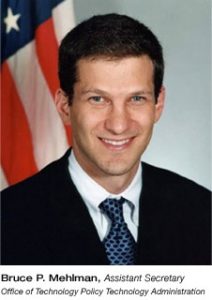 On April 3, 2001, George Bush announced his intent to nominate Bruce P. Mehlman to be Assistant Secretary of Commerce for Technology Policy.
On April 3, 2001, George Bush announced his intent to nominate Bruce P. Mehlman to be Assistant Secretary of Commerce for Technology Policy.
“He has served as Telecommunications Policy Counsel for Cisco Systems since 1999. Before joining Cisco Systems he was General Counsel and Policy Director for the House Republican Conference and served as General Counsel for the National Republican Congressional Committee from 1996 to 1999.”7
If you know how to decode the language, you’ll find that most of the Bush Administration proposals for health care have to do with Health Information Systems – not health care per se. And when actual health care involving doctors is mention, it is rural, community health care but, it appears to this analyst – based on a lot of reading, that these facilities will be experimental pilot programs for telemedicine8 for the poor – not real health care with real doctors in real doctor’s offices.
We’ve got many members of the House and the Senate; most notably, Senators Breaux and Thomas — I mean, Senators Breaux and Frist, and Congressman Thomas, all three members who worked hard on Medicare reform in the past and are joining with the administration to promote Medicare reform this year.
Yet Medicare takes way too long to authorize new treatments. We must act now to ensure that the next generation of medical technology is readily available to America’s seniors, from medicines tailored exactly to an individual’s disease, to Internet diagnosis that will allow patients to be treated by experts on the other side of their continent without the patients having to leave their living rooms.
Medicine is constantly improving. Medicare must keep pace. That’s my administration’s commitment today, and its exciting new vision for health care in America.
Executive Order 13335
(Excerpts)
By the authority vested in me as President by the Constitution and the laws of the United States of America, and to provide leadership for the development and nationwide implementation of an interoperable health information technology infrastructure to improve the quality and efficiency of health care, it is hereby ordered as follows:
Sec. 2. Policy. In fulfilling its responsibilities, the work of the National Coordinator shall be consistent with a vision of developing a nationwide interoperable health information technology infrastructure that:
(a) Ensures that appropriate information to guide medical decisions is available at the time and place of care;
(d) Promotes a more effective marketplace, greater competition, and increased choice through the wider availability of accurate information on health care costs, quality, and outcomes;
(e) Improves the coordination of care and information among hospitals, laboratories, physician offices, and other ambulatory care providers through an effective infrastructure for the secure and authorized exchange of health care information; and
(f) Ensures that patients’ individually identifiable health information is secure and protected.
Sec. 3. Responsibilities of the National Health Information Technology Coordinator. (a) The National Coordinator shall, to the extent permitted by law, develop, maintain, and direct the implementation of a strategic plan to guide the nationwide implementation of interoperable health information technology in both the public and private health care sectors that will reduce medical errors, improve quality, and produce greater value for health care expenditures.
(iii) Evaluate evidence on the benefits and costs of interoperable health information technology and assess to whom these benefits and costs accrue;
(v) Not assume or rely upon additional Federal resources or spending to accomplish adoption of interoperable health information technology; and
(a) The Director of the Office of Personnel Management shall report within 90 days of this order on options to provide incentives in the Federal Employee Health Benefit Program that will promote the adoption of interoperable health information technology; and
(b) Within 90 days, the Secretary of Veterans Affairs and the Secretary of Defense shall jointly report on the approaches the Departments could take to work more actively with the private sector to make their health information systems available as an affordable option for providers in rural and medically underserved communities.
HHS Secretary Michael Leavitt, testimony before House Budget Committee on Health Information Technology:
“Last year, the President made the use of health information technology a key principle of his health care agenda. On April 27, 2004, the President signed Executive Order 13335 (EO) announcing his commitment to the promotion of health information technology to lower costs, reduce medical errors, improve quality of care, and provide better information for patients and physicians. In particular, the President called for widespread adoption of interoperable electronic health records (EHRs) within 10 years so that health information will follow patients throughout their care in a seamless and secure manner. This means that their medical information is available to the right people at the right time, while remaining protected and secure. The President has tasked HHS with making this vision a reality by 2014. The goal can be met, but there are major challenges to be faced, and the path forward requires a concentrated nationwide effort to achieve widespread adoption of interoperable EHRs.”6
United Nations Global Fund
On April 26, 2001, the United Nations Secretary-General proposed a Global Fund for the Fight Against HIV/AIDS and other infectious diseases. (Recall that the G7 agreed to a Global Health System in 1995 with the European Commission taking the lead for coordinating development).
Unveiling the Plan: Health IT Infrastructure for Biomedical Research
On February 11, 2002, President George W. Bush announced his Health Care Agenda at the College of Medicine, University of Wisconsin.
In the press release, Bush talks about health care in terms that most people understand – access, cost and quality. Notice that the focus of health care reform is about health insurance – not health care. The agenda between the lines is a national IT systems infrastructure for biomedical research as Bush reveals in his plan for Health Security.
The following are excerpts from Bush’s Plan for Health Security:
2002 George Bush’s Plan for “Health Security9
III. EFFECTIVE SUPPORT TO STRENGTHEN THE HEALTH CARE SAFETY NET AND INCREASE BIOMEDICAL RESEARCH
“…the President believes that we must also improve access to preventive and primary care for Americans who are not insured. Additionally, many of our nation’s uninsured or medically underserved live in rural areas or inner city neighborhoods where there is a shortage of physicians and other health care providers. Strengthening the health care safety net is a necessary part of improving American’s access to care, and to helping our health care system focus on preventing disease rather than treating avoidable complications. The President has proposed major initiatives to strengthen the health care safety net.”
2002 Health Security Plan FAQ Sheet10
The President will back up this agenda with more than $300 billion in proposed funding.
Effective Support to Increase Biomedical Research and Strengthen the Health Care Safety Net:
Support for Biomedical Research: The President’s budget includes a total of $27.3 billion for the National Institutes of Health (NIH), including the final installment of $3.9 billion that will complete the goal the doubling of the NIH budget. This increase will allow NIH will expand its efforts to support research to improve the prevention, detection and treatment of diseases.
Improved Public Health Systems to Better Protect the Public: The President’s budget includes $5.9 billion for bioterrorism preparedness, an increase of $4.5 billion — more than three times the 2002 base funding level. The budget supports a variety of activities to prevent, identify and respond to incidents of bioterrorism — including strengthening state and local health infrastructures, enhancing medical communications and disease surveillance capabilities and improving specialized Federal response capabilities. The budget also provides $1.7 billion for NIH research into new vaccines and diagnostics and increased security at its facilities.
Community Health Centers: The President’s budget includes $1.5 billion for CHCs, a $114 million increase that would continue the Bush Administration’s long-term strategy to add 1,200 new and expanded health center sites over five years and serve an additional 6.1 million patients. The increase for fiscal year 2003 will support 170 new and expanded health centers, and provide services to a million more patients.
Under the guise of providing prescription drug coverage for seniors, the Medicare Prescription Drug Improvement and Modernization Act of 200314 was passed by Congress and signed into law by President George W. Bush. Recall that the prescription drug program required seniors to buy a card from health insurers that allegedly gave them discounts but for people who had serious requirements for drugs, there was the infamous “donut hole of non-coverage” – and Medicare was prohibited from negotiating discounts. CMS lied about how much it would cost and there was a reason for that. It was about integrating the drug component into the nationalized system of medical records.
Health IT – “Federal Drug Benefit Inspires Integration Work“
“The soon-to-arrive Medicare prescription drug benefit has sparked business for systems integrators. A number of companies are working on projects or anticipate new business associated with the Jan. 1, 2006, launch of the program. The program, authorized under the Medicare Modernization Act of 2003, is intended to reduce seniors’ out-of-pocket expenses for subscription drugs. Integrators are building or expanding systems to handle the drug benefit’s data processing workload.”
CGI-AMS isn’t alone in the business uptick. Unisys last month said part of a $90 million contract extension with the New Jersey Department of Human Services will involve supporting the drug benefit, since the project involves the interface of Medicaid and Medicare records.
Other service providers are gearing up for increased activity. Warren Edwards, chief financial officer of Affiliated Computer Services, told investors in a recent conference call that he expects more business to stem from the implementation of the Medicare prescription drug benefit. ACS is an outsourcing vendor that specializes in benefits processing.
Infocrossing, another outsourcing vendor, earlier this month announced that its health care subsidiary will expand its Medicare Managed Care Services offering to support the prescription drug benefit.
King said the drug benefit-related business will continue into next year, as CMS pursues additional functionality. “I think once everything gets going in January, probably by the end of March CMS will have a whole slew of additional requirements,” King said. Government Health IT, John Moore, 200513
The 2003 legislation will allow them to begin the process of redesigning the health care system to enable live fire medical research, “genetically based, personalized medicine with segregation of targeted populations for the research and a shift in medicare spending on preventative (and cheap) procedures:
“Seniors can choose to stay in traditional Medicare and still get prescription drug coverage. Or, they can choose a new Medicare-approved private plan where the drug benefit is integrated into broader medical coverage, including disease management programs and protections against high out-of-pocket medical spending. Or, seniors who like the lower cost sharing and extra benefits often available in managed care plans would be able to make that choice as well.
Under a modernized Medicare, there will be better coverage for preventive care (e.g., a “welcome to Medicare” physical that would include screening for cancer, diabetes, and heart disease, as well as immunizations against pneumonia and the flu).
 In October 2003, Bruce Mehlman left government service to become the Executive Director of the Computer Systems Policy Project15 (CSPP).
In October 2003, Bruce Mehlman left government service to become the Executive Director of the Computer Systems Policy Project15 (CSPP).
Excerpt from the Press Release:
Washington D.C. – October 20, 2003 – The Computer Systems Policy Project (CSPP) announced today that Bruce P. Mehlman will become its new executive director effective December 1, 2003. Mehlman will succeed Ken Kay who has served as the executive director of CSPP since its inception in 1989. Mehlman is currently Assistant Secretary of Commerce for Technology Policy.
The CSPP is an affiliation of CEOs and chairmen from eight leading U.S. information technology companies including Michael Dell of Dell Inc., Joseph Tucci of EMC Corporation, Carly Fiorina of Hewlett-Packard Company (HP), Samuel J. Palmisano of IBM Corporation, Craig Barrett of Intel Corporation, Chris Galvin of Motorola, Inc., Mark Hurd of NCR Corporation, and Lawrence Weinbach of Unisys Corporation.
As executive director of CSPP, Mehlman will work extensively with the CEOs, chief technical officers and policy staff of CSPP’s member companies to define their vision for information technology public policy in the 21st Century. He will also continue to lead CSPP’s effective relationship with the Administration and Congress on key public policy priorities including broadband and spectrum, digital rights management, export controls, privacy and trade. Additionally, he will spearhead a new CSPP initiative on U.S. competitiveness and productivity, which will encourage government policies that support continued innovation, incentives for IT investment, and to improve education and training for American workers.
Ken Kay, while he has been executive director of CSPP, has also served as chairman of Infotech Strategies, the information technology consulting firm he co-founded in 1997. When he departs CSPP on December 31, Kay will open an Infotech Strategies office in Tucson, Arizona and focus on representing companies and associations in the areas of education technology, e-health and e-government.
Catapulting the Propaganda – 2004
By now they are beginning to present the real agenda of health care reform which is the nationalized, networked system of medical records. This has nothing to do with health care. It has everything to do with Health Information Systems. “Virtual Medicine – health care by internet” which includes the capability to perform medical research on people without their knowledge – especially when you have unqualified providers on the front lines – with the patients.
Top US Biologists Oppose Biodefense Boom16
88 Dead Scientists & Microbiologists17
By 2005, the architecture and systems for nationalized medical records was beginning to be implemented at some clinics like the Mayo Clinic. Of course there are still barriers to nationalized medical records, health information sharing and internet access.
Federal Health IT System Architecture19 (this is a captured copy)
2005 White House FAQ Sheet, E-Prescribing and Health IT
Cleveland Clinic dog and pony show, 2005, January 27, 2005
National Governor’s Association
Health Information Technology
Nationwide Interoperable
Health Information Infrastructure
In August of 2006, George Bush signed Executive Order 1341020 calling for “a nationwide interoperable health information technology infrastructure”
Biomedical Research Agenda Surfaces
In 2007, at the National Governor’s Conference (18 minutes 30 sec), the plan was presented to the Governors by Ginny Wagner of IBM and Dr. Douglas Woods of the Mayo Clinic. (My article about it: IBM and Dr. Mengele – Together Again)
In 2007, Senator Ron Wyden introduced legislation for the next phase of “health care reform”. The legislation was titled, “Healthy Americans Act“. In 2008, Wyden issued a press release saying that the plan would be revenue neutral in 2014 and would produce surpluses thereafter. (Note: it will only produce surpluses if they commit medical genocide).
In 2008, a lobbying group called “Research!America” held a forum to “game” the ideas of what should be done to the health care system in the next decade or so. This forum begins to address the issue of using the American population (their networked medical records) for medical research.
2008 Research!America Forum “Gaming the System”
“Novelli and Garry Neil, MD, Johnson & Johnson’s corporate vice president for science and technology, said advocates should make policymakers aware of the huge “return on investment” from biomedical research.
“Congress is always thinking cost containment …and we need to figure out how to frame our arguments in cost containment ways,” Neil said. “We continue to see health care as a cost center and a cost driver; instead we should be seeing it as a productivity generator, as an engine for growth.“
Food and Drug Administration Commissioner Andrew C. von Eschenbach, MD, agreed, “Investments in biomedical research … are going to be the drivers of the economy in the next two decades.” He said advocates must argue, “This is not an appropriation-this is an investment in our present and in our future.”18
Also in 2008, Republican Party Suck Up Governor Butch Otter proposed and the Idaho State Legislature approved legislation authorizing a health information exchange with internet access to medical records and the ‘Idaho Health Data Exchange‘ was born.
Idaho’s health information exchange system is a step toward achieving the federal government’s goal of creating a value-driven healthcare system through the development of a nationwide interoperable health information technology infrastructure, as stated in Executive Order 13410.
The Idaho Health Data Exchange is a private – non-profit corporation.
When I found out about the Idaho HDE, I contacted them immediately to find out how to opt out. The form was sent to me by email:
Idaho Health Data Exchange Opt Out Form
The way the instructions read, it sounds as if health care providers will automatically send your medical record information to the IHDE. When I read that, I took the opportunity to question the IHDE further.
 George W. Bush – HHS Sec. Tommy Thompson
George W. Bush – HHS Sec. Tommy Thompson
February 11, 2002, University of Wisconsin, College of Medicine
March 26, 2002 – Bush Appoints Elias Zerhouni and Richard Carmonas12
It’s my honor to nominate two fine men to head important government institutions, to take important jobs. My nominee to lead the National Institute of Health is Elias Zerhouni, and my nominee as the next Surgeon General is Richard Carmona. These are distinguished physicians who have worked tirelessly to save lives, and to improve lives. They bring exceptional knowledge and skill to these critical jobs. And they are absolutely dedicated to improving the health and well-being of all Americans.
Leading the NIH is a great responsibility, and I have picked the right man to do so. Dr. Zerhouni and his wife immigrated to America from Algeria with $300 in their pocket, but a dream of opportunity. Today he is the Executive Vice Dean of the Johns Hopkins University School of Medicine, the Chairman of the Department of Radiology and Radiological Science at Johns Hopkins, and a Professor of Radiology and Biomedical Engineering. He is an expert in biomedical research, and is committed to extending his benefits to all Americans, and all humanity.
The National Institutes of Health is entering a new era of medical promise. NIH researchers recently cracked the genetic code, an amazing achievement with enormous potential benefits. New diagnostic tools are alerting patients when they have an elevated risk of certain diseases, so they can take an active role in preventing them. New treatment therapies will be tailor-made for an individual’s genetic makeup. And many medical treatments will become less invasive.
American medicine is on the verge of dramatic progress against AIDS, against diabetes and against heart disease. We’re closing in on cancer’s cause and cancer’s cure. The anthrax attacks against American citizens also demonstrated the need to strengthen our defenses against bioterrorism. Medical research will improve our ability to identify and respond and treat infectious diseases, whether they occur naturally or are used as terrorist weapons.
Dr. Zerhouni is well-prepared to manage this rapidly growing institution during times of great new opportunity and urgent biodefense needs. He has supervised research at Johns Hopkins, one of our nation’s leading research facilities. One former colleague calls him a quadruple threat: a doctor who excels at teaching, researching, patient care and management. Dr. Zerhouni shares my view that human life is precious, and should not be exploited or destroyed for the benefits of others. And he shares my view that the promise of ethically conducted medical research is limitless.
….As an Army Green Beret in Vietnam, a decorated police officer in Pima County, Arizona, a SWAT team member, a nurse and a physician, Dr. Carmona has redefined the term, hands-on medicine. Dr. Carmona currently serves as the Clinical Professor of Surgery and Clinical Assistant Professor of Family and Community Medicine at the University of Arizona. He is also the chairman of the state of Arizona Southern Regional Emergency Medical System. He will bring to the Surgeon General’s Office a proven commitment to service, and a strong management background.
The next Surgeon General will address three particularly urgent issues. First, the Surgeon General administers the 5,600-member Public Health Service Commission Corps, health care professionals who are on call for emergency duty. Members of this force were deployed in New York and Washington, D.C. after the terrorist attacks of September the 11th, and during the anthrax attacks that followed.
Computer Systems Policy Project
 John A. Young was president of Hewlett-Packard Company from 1977 to 1992, and chief executive officer from 1978 to 1992. ♦ In 1983, Young was appointed by President Reagan to be Chairman of the President’s Commission on Industrial Competitiveness. ♦ Young served as founding chairman of the Council on Competitiveness from 1986 to 1990. ♦ He was named co-chairman of the President’s Committee of Advisors on Science and Technology in 1994. ♦ He is founding chairman of the Computer Systems Policy Project, an affiliation of chief executive officers of American computer systems companies who formulate and advocate public-policy recommendations of critical importance to the computer industry. ♦ He also was founding chairman of the board of Smart Valley, Inc., a nonprofit corporation formed in 1993 to create an electronic community in Silicon Valley.
John A. Young was president of Hewlett-Packard Company from 1977 to 1992, and chief executive officer from 1978 to 1992. ♦ In 1983, Young was appointed by President Reagan to be Chairman of the President’s Commission on Industrial Competitiveness. ♦ Young served as founding chairman of the Council on Competitiveness from 1986 to 1990. ♦ He was named co-chairman of the President’s Committee of Advisors on Science and Technology in 1994. ♦ He is founding chairman of the Computer Systems Policy Project, an affiliation of chief executive officers of American computer systems companies who formulate and advocate public-policy recommendations of critical importance to the computer industry. ♦ He also was founding chairman of the board of Smart Valley, Inc., a nonprofit corporation formed in 1993 to create an electronic community in Silicon Valley.
The Computer Systems Policy Project was a continuation of Ronald Reagan’s Commission on Industrial Competitiveness. The policy can be summed up: Communist Central Planning and Corporatization of the US by Information Systems Design. Industrial policy for one sector kicked off the project to destroy freedom, autonomy and life for humans not just in the United States, but around the world.
In December 1990, the CEOs of CSPP met with Administration officials to discuss their public policy positions on technology issues. At that meeting, CSPP was asked to assess the High Performance Computing and Communications (HPCC) Program and provide recommendations to increase industry’s involvement and interest.
On December 3, 1991, after almost a year of review and analysis, CSPP issued its report and video, “Expanding the Vision of High Performance Computing and Communications: Linking America for the Future,” concluding that the HPCC Program is a significant and critical undertaking. It would, CSPP determined, advance research in high performance computing and networking technologies as well as increase the use of high performance computers to solve important science and engineering problems.
More CSPP Reports
Breaking the Barriers to the National Information, December 1994
Community Health
Theranos: Market fraud for government policy
Executive Order 13410
April 27, 2006
Excerpts
Section 1. Purpose. It is the purpose of this order to ensure that health care programs administered or sponsored by the Federal Government promote quality and efficient delivery of health care through the use of health information technology, transparency regarding health care quality and price, and better incentives for program beneficiaries, enrollees, and providers. It is the further purpose of this order to make relevant information available to these beneficiaries, enrollees, and providers in a readily useable manner and in collaboration with similar initiatives in the private sector and non-Federal public sector. Consistent with the purpose of improving the quality and efficiency of health care, the actions and steps taken by Federal Government agencies should not incur additional costs for the Federal Government.
Sec. 2. Definitions. For purposes of this order:
(c) “Interoperability” means the ability to communicate and exchange data accurately, effectively, securely, and consistently with different information technology systems, software applications, and networks in various settings, and exchange data such that clinical or operational purpose and meaning of the data are preserved and unaltered.
(a) Health Information Technology.
(1) For Federal Agencies. As each agency implements, acquires, or upgrades health information technology systems used for the direct exchange of health information between agencies and with non-Federal entities, it shall utilize, where available, health information technology systems and products that meet recognized interoperability standards.
(2) For Contracting Purposes. Each agency shall require in contracts or agreements with health care providers, health plans, or health insurance issuers that as each provider, plan, or issuer implements, acquires, or upgrades health information technology systems, it shall utilize, where available, health information technology systems and products that meet recognized interoperability standards.
Footnotes – most non-working links can be found in the Internet Archive
[1] Federal Register / Vol. 69. No. 84/Friday, April 30, 2004, pg 24059-24061, Executive Order 13335–Incentives for the use of Health Information Technology and Establishing the Position of the National Health Information Technology Coordinator
http://edocket.access.gpo.gov/2004/pdf/04-10024.pdf
[2] GAO Report to the Chairman, Committee on Governmental Affairs, U.S. Senate, ‘Medical ADP Systems: Automated Medical Records Hold Promise to Improve Patient Care’, January 1991, GAO/IMTEC-91-5 http://archive.gao.gov/t2pbat8/143217.pdf
[3] Office of the Secretary, Health and Human Services, HCFA Press Office, October 19, 1992, ‘Nation-Wide Electronic Health Care Information Network, http://www.os.dhhs.gov/news/press/pre1995pres/921019.txt
Archived link http://web.archive.org/web/20060924202827/http://www.os.dhhs.gov/news/press/pre1995pres/921019.txt
[4] William J. Clinton Foundation, Press Release on First One Hundred Days of Presidency, White House Office of the Press Secretary, April 25, 1993
Retrieved from archive copy http://www.channelingreality.com/NWO_WTO/Documents/Medical/Clinton_1993_First_100_Days.pdf
http://www.clintonfoundation.org/legacy/042593-press-release-on-first-one-hundred-daysof%20presidency.htm Original link – stale
[5] GAO Report to the Chairman, Committee on Governmental Affairs, U.S. Senate, ‘Automated Medical Records: Leadership Needed to Expedite Standards Development”, April 1993, GAO/IMTEC-93-17 http://archive.gao.gov/t2pbat5/149267.pdf
[6] Mike Leavitt, Secretary of HHS, Testimony before the Committee on the Budget, United States Senate, July 20, 2005. http://www.hhs.gov/asl/testify/t050720.html Archived: http://web.archive.org/web/20070713133718/http://www.hhs.gov/asl/testify/t050720.html
[7] White House, Office of the Press Secretary, April 3, 2001, ‘President Bush Announces Eleven People to Serve in His Administration’
http://www.whitehouse.gov/news/releases/2001/04/print/20010403-2.html
[8] University of Arizona, Arizona Telemedicine Newsletter, Summer 2004
http://www.telemedicine.arizona.edu/program/Telemed_newsltr_Smr041.pdf
[9] White House, “The President’s Proposals for Health Security in the World’s Best Health Care System’, Archived http://web.archive.org/web/20050210142621/http://www.whitehouse.gov/infocus/medicare/health-care/
[10] White House, Office of the Press Secretary, February 11, 2002, ‘Fact Sheet: President Outlines Agenda for Improving Health Security in the Best Health Care System in the World. http://www.whitehouse.gov/news/releases/2002/02/20020211.html
[11] White House, Office of the Press Secretary, March 26, 2002, ‘President Nominates NIH Director and Surgeon General’, http://www.whitehouse.gov/news/releases/2002/03/20020326-3.html
[12] White House, Policy Office, March 26, 2002, ‘President Announces Nominees for Key Health Posts’ “nominees in focus”
http://www.whitehouse.gov/infocus/keyhealthposts/
[13] Government Health IT, John Moore, August 29, 2005, ‘Federal drug benefit inspires integration work’,
http://govhealthit.com/Articles/2005/08/Federal-drug-benefit-inspires-integration-work.aspx
[14] White House, Office of the Press Secretary, December 8, 2003, ‘Fact Sheet: Medicare Prescription Drug, Improvement, and Modernization Act of 2003’, http://www.whitehouse.gov/news/releases/2003/12/20031208-3.html
[15] Technology CEO Council, Press Room Archive, October 10, 2003, ‘ Computer Systems Policy Project (CSPP) Selects Bruce P. Mehlman as New Executive Director’, http://www.cspp.org/index.php?option=com_content&task=view&id=204&Itemid=159
[16] New Scientist article, Debora Mackenzie, March 1, 2005, “Top US biologists oppose biodefence boom”
http://www.newscientist.com/article/dn7074-top-us-biologists-oppose-biodefence-boom.html?full=true&print=true
[17] Rense website, article, Mark Harper, June 16, 2005, “Now 88 Dead Scientists and Microbiologists”,
http://www.rense.com/general66/deadmicro.htm
[18] Research!America, National Press Club Forum, March 18, 2008, Summary, ‘Valuing Evidence Based Research and Enhancing Its Impact’
http://www.researchamerica.org/forum_summary08
[19] Office of Management and Budget, eGov, Powerpoint, Nationwide Health Information Architecture Issues: Interoperability, Standards, Connectivity and Security, April 27, 2005 captured copy http://www.channelingreality.com/CSPP/Health_Care_PP.pdf
[20] Federal Register / Vol. 71, No. 166 / Monday August 28, 2006, pg. 51089-51091, Executive Order 13410, “Promoting Quality and Efficient Health Care in Government Administered or Sponsored Health Care Programs”
http://edocket.access.gpo.gov/2006/pdf/06-7220.pdf
[21] Idaho Health Data Exchange, Initiatives, July 4, 2008, http://idahohde.org/s%20and%20f%20initiatives.html
This article was originally published on channelingreality.com in 2008


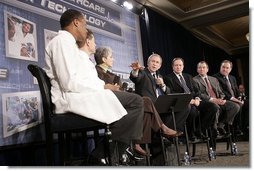
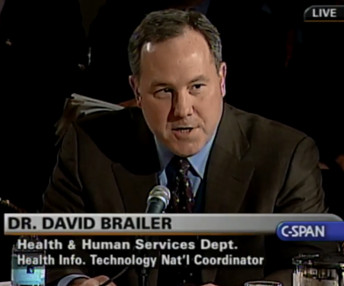
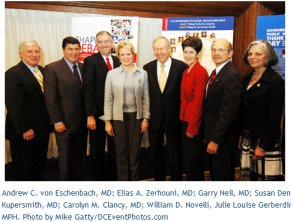
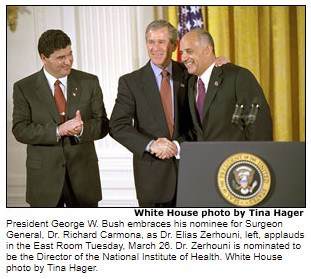





3 Comments
Kristin
GREAT STUFF VICKY!!!!!
Vicky Davis
Thank you Kristin. I’m working on bringing over the article that followed that one. I should have it done in a day or two.
Kristin
Replying to mine own comment- readers might want to check this out https://nam.edu/harnessing-evidence-and-experience-to-change-culture-a-guiding-framework-for-patient-and-family-engaged-care/ This is the framework for the “Change Culture” The “Senior Leader and Innovation Members: list includes (Ex Oficio) David J Shulkin, Chief Executive of the Veterans Health Administration. The study lists the ways and means to implement this :change culture. It is rather interesting.
One topic that caught my eye was Human Gene Editing (!) https://nam.edu/initiatives/
another link here https://nam.edu/initiatives/vital-directions-for-health-and-health-care/ with a video “…the incoming presidential administration must weigh as it charts the next steps for health reform in the United States.” ( hope and pray the new administration will see through this nonsense and nip it in the bud.